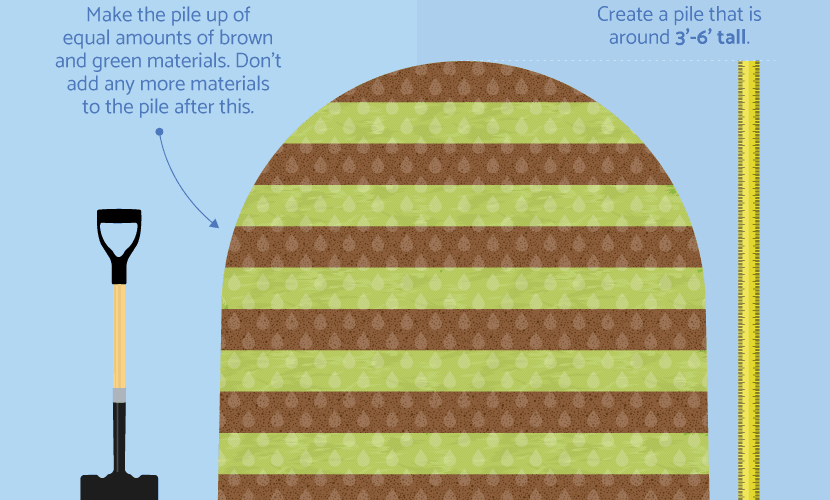Understanding that what was once alive can be composted certainly helps to understand exactly what can be composted. From banana peels, crushed egg shells, coffee grinds to grass cuttings, your compost will regenerate itself into an organic matter that will enhance your soil for a nutrient rich base in which to grow your next batch of flowers and vegetables. You can even toss in newspaper, cartons, paper plates and cardboard boxes as long as they are not coated in wax. All paper products come from trees that were once living and therefore can be composted.
There are some things that should not be placed in the compost bin and these include: meat, fat, dairy products, bones, or raw eggs as they will break down over time but could increase the risk of certain pests to your premises.
Now that you know what can be composted, how do you go about building a compost area at your home that is both functional and practical? A welded wire cylinder bin is the easiest and least expensive compost container. You simply need about 10 feet of welded wire fencing to produce a compost bin with a minimum of 3 feet diameter. Since the mesh comes in varying sizes, the Cooperative Extension recommends using a 1” x 2” mesh or smaller to prevent debris from falling out as you turn and manipulate the compost bin. Secure the wire together, forming a cylinder, by using plastic coated twisting ties or nylon string.
Once you have finished assembling your bin, locate it in a shady area that allows for easy access for you and good drainage for the compost bin.
The Lasagna compost method is the easiest to maintain because it rarely requires any turning of the contents. You simply layer the entire contents beginning with a ground layer of twigs, sticks and any stalk material that will allow airflow and oxygen that is necessary to the compost process.
Alternate brown and green layers where the brown layers are leaves, sawdust and torn newspaper and the green layers are the recommended food stuffs. Always begin and end with a brown layer that resembles a saucer which will hold the majority of the thin layer of food without ever letting the food show through. The green layer, the food layer, should never be more than two inches thick. Generally, it will take about one year to fully realize the benefits of compost material from a bin using this method but factors such as weather conditions and the types of material may alter that timeframe.
The local Cooperative Extensions (located throughout the entire United States) offers tips and advice for understanding and managing backyard composts in every region of our great nation. Visit them on the web at: USDA: Cooperative Extension System Offices.
References:
Cornell University: Compost Brochure
How To Compost: General Info



